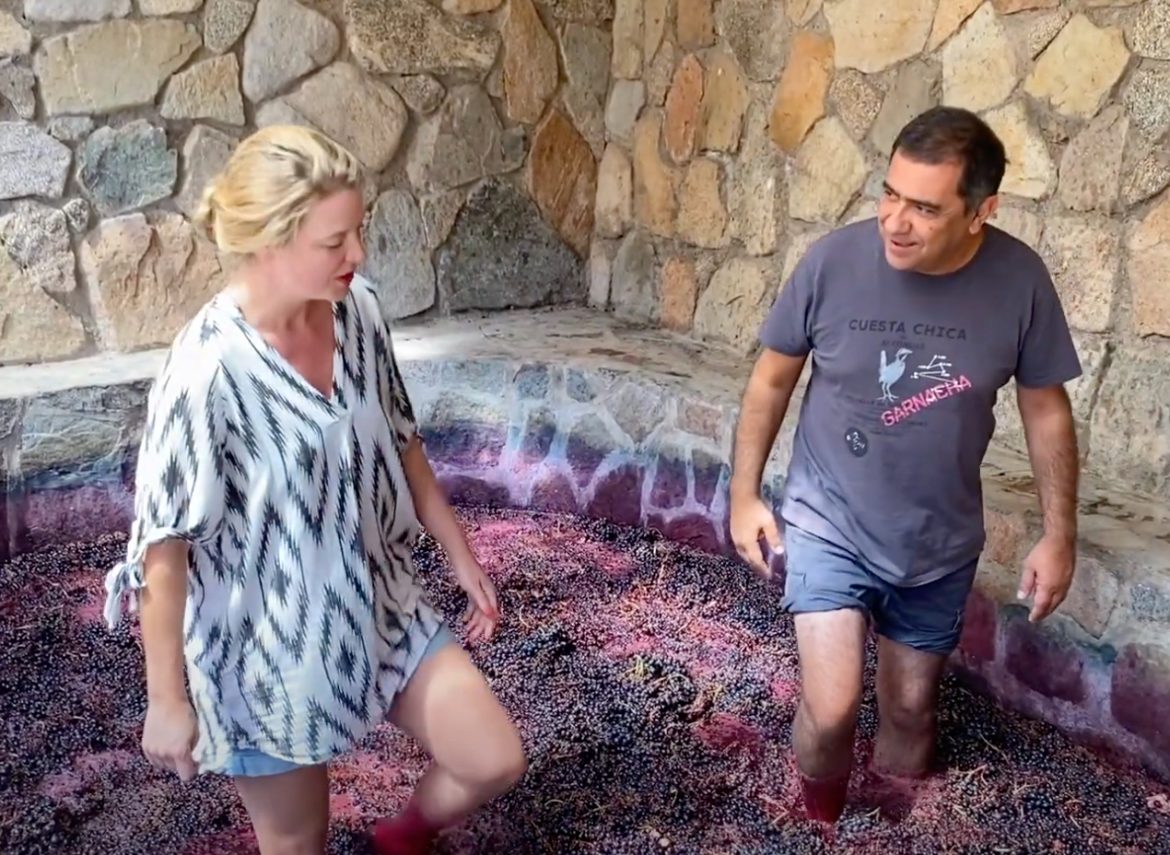Ever wondered about the art behind foot-stomping wine? In this interview, winemaker Marcelo Retamal talks about the wines of Viñedos de Alcohuaz while foot-stomping grapes in their high altitude winery in Elqui.
To read more about Viñedos de Alcohuaz and other wineries in Chile, visit our Chile winery guide
Interview with Marcelo Retamal on the art behind the wines of Viñedos de Alcohuaz
We are in your Viñedos de Alcohuaz, at the end of harvest.
This is the last pick. It’s Cariñena, from the highest part of the vineyard, at 2,200 m.a.s.l
Why are we in a lagar?
If you are close to the sky, at a high altitude, the grapes’ skin is very thick and has a lot of colour and tannins. We decide to use lagar because the punch down with your foot is very soft. You crush the grapes only at the end of the lagar and therefore get less extraction.
And you do all of your red wines foot trodden?
Yes, except the Garnacha which is fermented in a concrete tank because it gets oxidized. The first two years, we made the Garnacha in a lagar like this and the wines got a Fino, Jerez manzanilla aroma and it’s not what we want.
But the rest of the wines, the Cariñena, Malbec, Syrah, Petit Syrah, Touriga Nacional, Petit Verdot, they’re all made in the lagar. Today, we also have some Marsanne and Rousanne but it’s not foot stomped, it is made in an amphora. We put whole berries with no stems inside and ferment it with native yeast and no sulfur. The idea is to leave the berries for seven months and after that, we put the wine in a smaller amphora. After a year and for six years, we move the wine and in the seventh year, we bottle it.
When will this Cariñena come to market?
This Cariñena is 2022 and this wine will be in the market in seven years, in 2029.
The last time I was here foot-stomping was about seven years ago and the lagar hasn’t changed, the vineyard has grown a bit, the winemaking hasn’t changed but you are using a lot more stems, so can you tell me a bit about how you’ve decided to use more stems and whole bunches in the process and why?
Today, almost 100% is whole clusters because here we have a lot of fruit character and I don’t want too much fruit in the wine. Also, when you use whole clusters you feel the mouth a bit more rustic, the tannins and I like that. You get more finesse than the fruity wines and that is the idea.
How long will this wine be fermenting?
Normally, it’s left 11 days in the lagar. We don’t do maceration after fermentation because the skin is oxidized. We press the skins with a basket and put everything in a tank. This Cariñena is left for three years in concrete eggs and four years in bottle.
Read more about Viñedos de Alcohuaz
